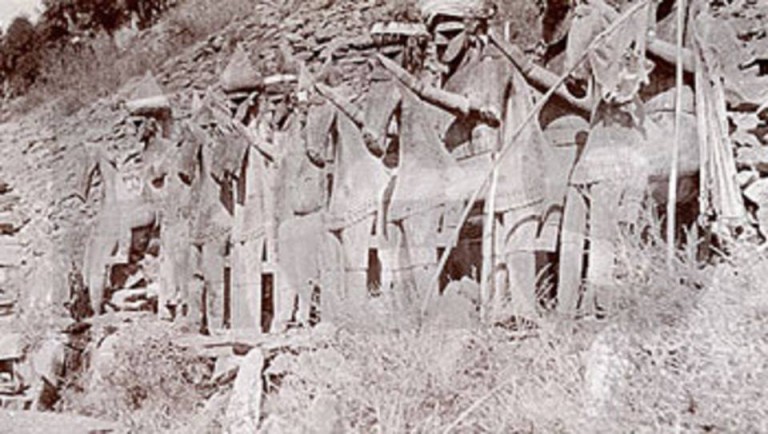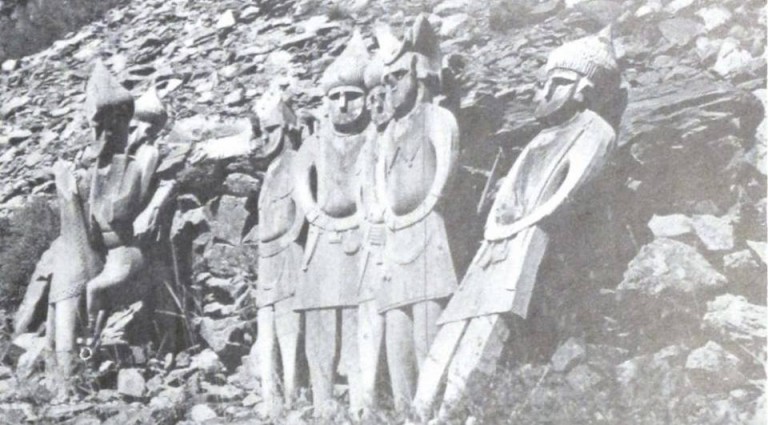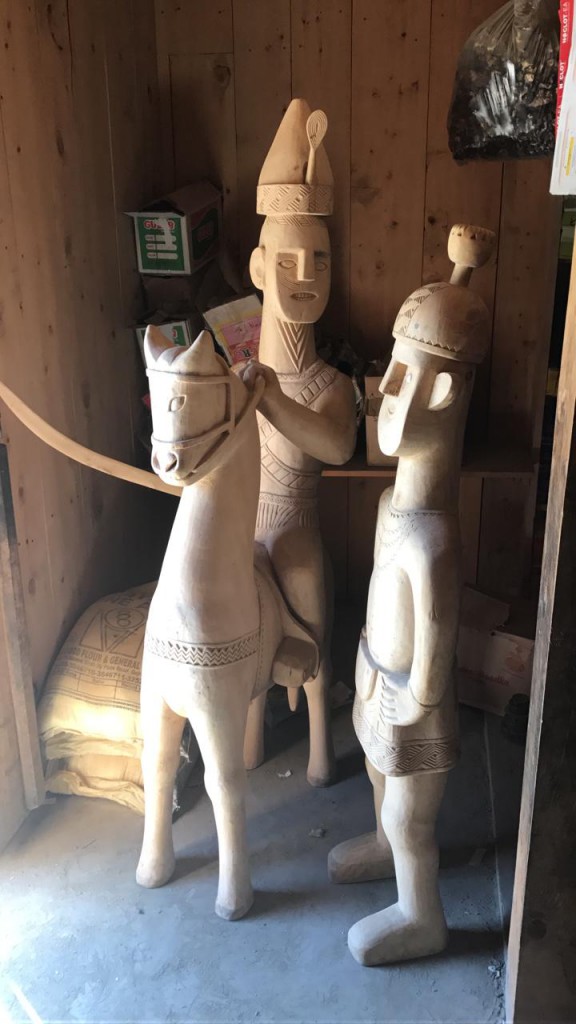Rehmat wali
a great kalash valley artist





REHMAT WALI KALASH THE ARTIST OF THE GANDAO, OR GRAVEYARD SCULPTURE, A DYING KALASH ART
Rehmat Wali Kalash is the son and grandson of renowned Gandao sculptors and one of the very last artists in Asia to keep alive the centuries-old tradition of the Gandao, represented in leading museums in the world, including the British Museum. The tradition of making wooden statues of ancestors to honor the memory of the dead is known to have been practiced for centuries among the Kalash people. These statues, locally called Gandao, could be seen standing over the graves in the three Kalash valleys of Bumburet, Rumbur and Birir. The practice declined as the Kalash people gradually lose their distinctive culture due to increasing exposure to the outside world. One reason for the decline in the old tradition is the shortage of wood carvers who used to carve the statues. Among the very few craftsmen who remain in the profession is Rehmat Wali Kalash in Rumbur. Wali Kalash is renowned for making impressive wooden statues. He lives in Kalashgram village in Rumbur valley, which was once home to many wooden statues and Kaundriks (triumphal posts). But today they do not exist and are preserved only in the memory of the people. Wali believes that there were more than 40 Gandaos in different villages of the Rumbur valley which were stolen and sold to smugglers of antiques.

The most highly prized gandaos were those of Rumbur carved by older artists such as Khush Baig, Amir, Achayak and Mahamurat and his two sons. Those were also taken away as well as the mounted gandaos of Khush Baig and Amir.

The frequent theft of these cultural items discouraged the profession as people stopped spending on the old tradition. In the past people used to go to Prasun and Basghal valleys of Nooristan in Afghanistan to make the gandaos of their ancestors.

Both valleys had celebrated wood carvers. The father of Rehmat Wali also went to Prasun to learn the art of gandao making. Rehmat Wali Kalash learnt the art of making wooden states from his father who was also a very famous wood carver. Rehmat Wali is handicapped but despite this disability makes gandaos for both commercial and non-commercial purposes. Mostly foreigners purchase and value his work.

They do not pay much, yet the wages are sufficient to meet his modest needs. Rehmat Wali Kalash’s distinction as an artist lies in his ability to carve the statues from a single piece of wood. While carefully preserving the tradition of his ancestors, Wali Kalash has also brought innovation in his work, which is however perfectly compatible with his people’s culture.

In the old days, celebrated wood carvers have made gandaos of horsemen with a cap – a woolen cap that is still worn by the Kalash people. The cap has foldings on the front with slits on the sides. The horse has two heads which is a symbol of power in the Kalash culture. One can find depictions of the horse’s head in many sanctuaries of the Kalasha. The horse retains an important place in the Kalash thought. But it is virtually impossible for the present day Kalash to keep horses, owing to the scarcity of grazing fodder in the valleys. The presence of the divine is symbolized by wooden heads of this revered animal in the sanctuaries of Sajigor, Mahandeo, Jestak and others. The sanctuary of Mahandeo is called Malosh. These shrines are located in different villages of Bumburet valley. However, the most prominent is situated in the village of Brun. Mahandeo (great god) has a marked character as a virile warrior god, who protects the crops, birds, and hunting. He is, in fact, the protector of Kafir villages and the Kafir territory as a whole.The Jestak han (the village temple) has, on the other hand, a feminine personality. She is the protector of the home, the family, and the private life, the pregnancy, birth, children, love, against marriage sickness etc. The ‘kafirs’ hold funeral ceremonies at the Jestak han. As soon as anyone dies in the village, the corpse is placed in a rough wooden coffin and brought to the temple. The innovation introduced by Wali Kalash is a gandao without a turban or cap and with his mouth hung open in awe. This reflects, according to Wali Kalash, the lost Kingdom of the Kalash, who used to rule all over the present territory of Chitral. Wali Kalash cannot walk because of polio. He considers this as no hindrance at all. He has a rich connection with his people and with his people’s traditions. He is recreating within himself and by means of the centuries-old Gandau the imagery of the Kalash people, past and present.
